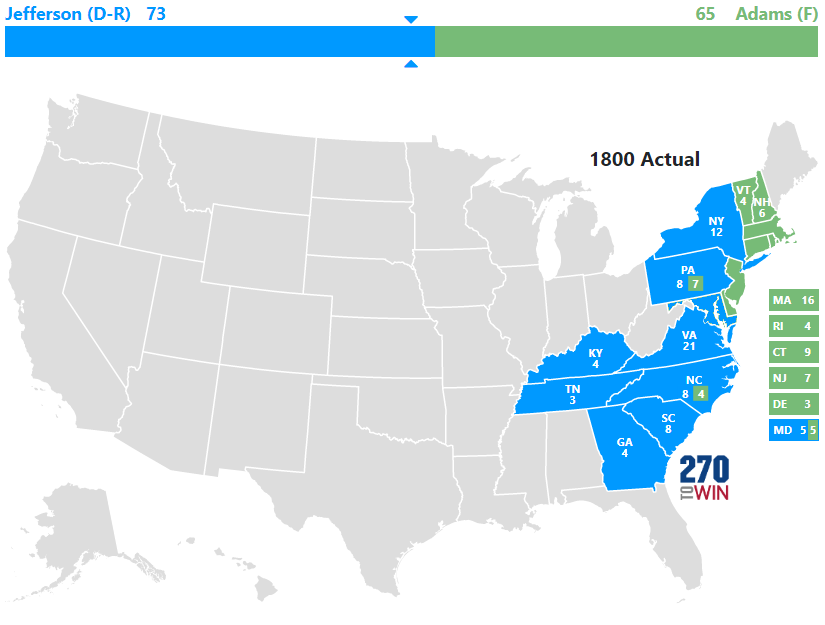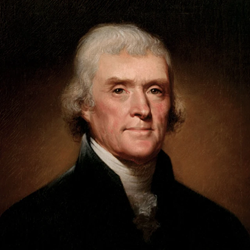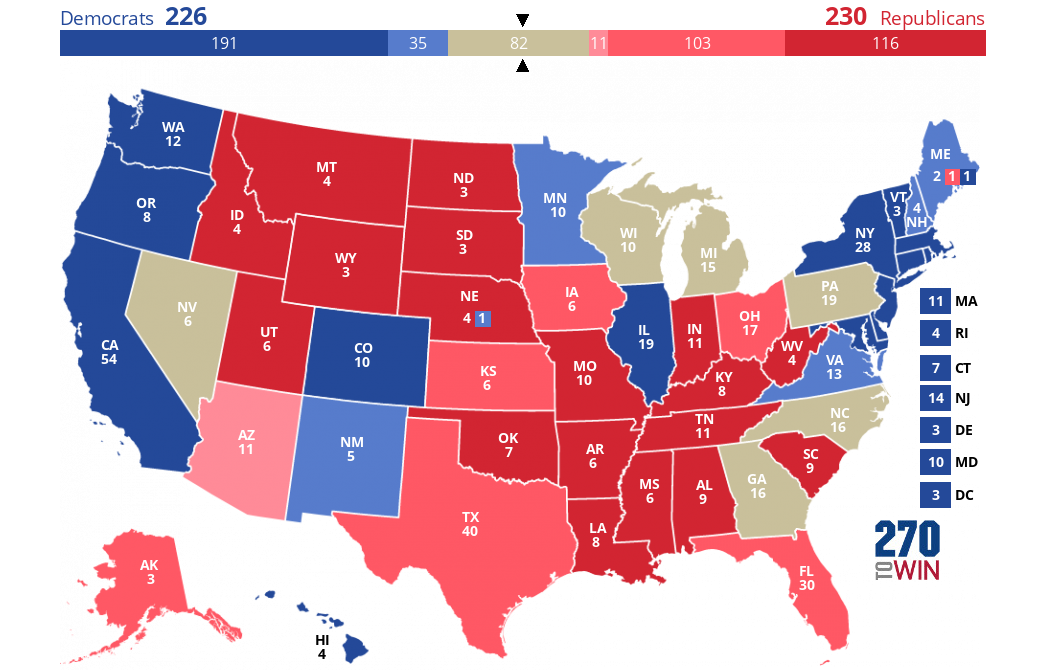1800 Presidential Election
In the United States Presidential election of 1800, sometimes referred to as the "Revolution of 1800," Vice President Thomas Jefferson defeated incumbent president John Adams. The election was a realigning election that ushered in a generation of Republican Party rule and the eventual demise of the Federalist Party in the First Party System. It was a lengthy, bitter rematch of the 1796 election between the pro-French and pro-decentralization Republicans under Jefferson and Aaron Burr, against incumbent Adams and Charles Pinckney's pro-British and pro-centralization Federalists.
Central issues included opposition to the tax imposed by Congress to pay for the mobilization of the new army and the navy in the Quasi-War against France in 1798, and the Alien and Sedition acts, by which Federalists were trying to stifle dissent, especially by Republican newspaper editors. While the Republicans were well organized at the state and local levels, the Federalists were disorganized, and suffered a bitter split between their two major leaders, President Adams and Alexander Hamilton. The jockeying for electoral votes, regional divisions, and the propaganda smear campaigns created by both parties made the election recognizably modern.
Source: Wikipedia
1800 Election Results
| Candidate | Party | Electoral Votes | ||
|---|---|---|---|---|
| ✓ | Thomas Jefferson | Democratic-Republican | 73 | |
| Aaron Burr | Democratic-Republican | 73 | ||
| John Adams (I) | Federalist | 65 | ||
| Charles C. Pinckney | Federalist | 64 |

1800 Election Facts
- During this election, Electors had 2 votes each for President, and all but one voted for both candidates in their party. Therefore, the map shown is broken out by party, as opposed to candidate
- Jefferson and Burr tied, sending election to the House of Representatives. Jefferson won on the 36th ballot.
- Controversy over electoral tie vote led to passage of 12th Amendment
- One Elector in Rhode Island cast one of his votes for John Jay
- Maryland electors split their vote, with 5 each for the Federalist and D-R candidates
- North Carolina electors split their vote, with 8 votes for the D-R and 4 for the Federalist candidates
- Pennsylvania electors split their vote, with 8 votes for the D-R and 7 for the Federalist candidates
- Issues of the Day: Alien & Sedition Acts, XYZ Affair, Relations with France
- Federal Capital moved from Philadelphia to Washington, DC in 1800


